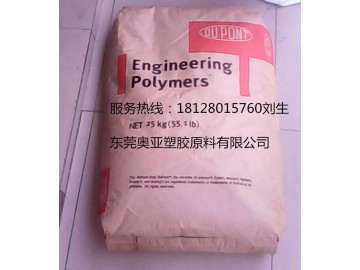Processing Texts
Injection molding
PREPROCESSING
Drying recommended = Yes, if moisture content of resin exceeds recommended level
Drying temperature = 80°C
Drying time, dehumidified dryer = 2-4 h
Processing moisture content = <0.2 %
PROCESSING
Melt temperature optimum = 290°C
Melt temperature range = 280-300°C
Mould temperature optimum = 70°C
Mould temperature range = 50-90°C
Maximum Screw tangential Speed : 0.4 m/s
Flow front speed : 300 mm/s
Hold pressure optimum : 85 MPa
Hold pressure range : 50-100 MPa
Back pressure : low
Hold pressure time : 4 s/mm
Maximum hold-up time : 15 min
Drying recommended = Yes, if moisture content of resin exceeds recommended level
Drying temperature = 80°C
Drying time, dehumidified dryer = 2-4 h
Processing moisture content = <0.2 %
PROCESSING
Melt temperature optimum = 290°C
Melt temperature range = 280-300°C
Mould temperature optimum = 70°C
Mould temperature range = 50-90°C
Maximum Screw tangential Speed : 0.4 m/s
Flow front speed : 300 mm/s
Hold pressure optimum : 85 MPa
Hold pressure range : 50-100 MPa
Back pressure : low
Hold pressure time : 4 s/mm
Maximum hold-up time : 15 min
| Rheological properties | dry / cond | Unit | Test Standard | |
| Moulding shrinkage, parallel | 0.7 / * | % | ISO 294-4, 2577 | |
| Moulding shrinkage, normal | 1.0 / * | % | ISO 294-4, 2577 |
| Mechanical properties | dry / cond | Unit | Test Standard | |
| Tensile Modulus | 3400 / 1940 | MPa | ISO 527-1/-2 | |
| Yield stress | 93 / 65 | MPa | ISO 527-1/-2 | |
| Yield strain | 4.7 / 19 | % | ISO 527-1/-2 | |
| Nominal strain at break | 14 / 40 | % | ISO 527-1/-2 | |
| Charpy notched impact strength, 23°C | 4 / 10 | kJ/m² | ISO 179/1eA |
| Thermal properties | dry / cond | Unit | Test Standard | |
| Melting temperature, 10°C/min | 262 / * | °C | ISO 11357-1/-3 | |
| Temp. of deflection under load | ISO 75-1/-2 | |||
| 1.8 MPa | 78 / * | °C | ||
| 0.45 MPa | 221 / * | °C |
| Other properties | dry / cond | Unit | Test Standard | |
| Density | 1140 / - | kg/m³ | ISO 1183 |
Chemical Media Resistance
| Acids | |
 |
Acetic Acid (5% by mass) (23°C) |
 |
Citric Acid solution (10% by mass) (23°C) |
 |
Lactic Acid (10% by mass) (23°C) |
 |
Hydrochloric Acid (36% by mass) (23°C) |
 |
Nitric Acid (40% by mass) (23°C) |
 |
Sulfuric Acid (38% by mass) (23°C) |
 |
Sulfuric Acid (5% by mass) (23°C) |
 |
Chromic Acid solution (40% by mass) (23°C) |
| Bases | |
 |
Sodium Hydroxide solution (35% by mass) (23°C) |
 |
Sodium Hydroxide solution (1% by mass) (23°C) |
 |
Ammonium Hydroxide solution (10% by mass) (23°C) |
| Alcohols | |
 |
Isopropyl alcohol (23°C) |
 |
Methanol (23°C) |
 |
Ethanol (23°C) |
| Hydrocarbons | |
 |
n-Hexane (23°C) |
 |
Toluene (23°C) |
 |
iso-Octane (23°C) |
| Ketones | |
 |
Acetone (23°C) |
| Ethers | |
 |
Diethyl ether (23°C) |
| Mineral oils | |
 |
SAE 10W40 multigrade motor oil (23°C) |
 |
SAE 10W40 multigrade motor oil (130°C) |
 |
SAE 80/90 hypoid-gear oil (130°C) |
 |
Insulating Oil (23°C) |
| Standard Fuels | |
 |
ISO 1817 Liquid 1 - E5 (60°C) |
 |
ISO 1817 Liquid 2 - M15E4 (60°C) |
 |
ISO 1817 Liquid 3 - M3E7 (60°C) |
 |
ISO 1817 Liquid 4 - M15 (60°C) |
 |
Standard fuel without alcohol (pref. ISO 1817 Liquid C) (23°C) |
 |
Standard fuel with alcohol (pref. ISO 1817 Liquid 4) (23°C) |
 |
Diesel fuel (pref. ISO 1817 Liquid F) (23°C) |
 |
Diesel fuel (pref. ISO 1817 Liquid F) (90°C) |
 |
Diesel fuel (pref. ISO 1817 Liquid F) (>90°C) |
| Salt solutions | |
 |
Sodium Chloride solution (10% by mass) (23°C) |
 |
Sodium Hypochlorite solution (10% by mass) (23°C) |
 |
Sodium Carbonate solution (20% by mass) (23°C) |
 |
Sodium Carbonate solution (2% by mass) (23°C) |
 |
Zinc Chloride solution (50% by mass) (23°C) |
| Other | |
 |
Ethyl Acetate (23°C) |
 |
Hydrogen peroxide (23°C) |
 |
DOT No. 4 Brake fluid (130°C) |
 |
Ethylene Glycol (50% by mass) in water (108°C) |
 |
1% nonylphenoxy-polyethyleneoxy ethanol in water (23°C) |
 |
50% Oleic acid + 50% Olive Oil (23°C) |
 |
Water (23°C) |
 |
Water (90°C) |
 |
Phenol solution (5% by mass) (23°C) |
Symbols used:
 possibly resistant
possibly resistantDefined as: Supplier has sufficient indication that contact with chemical can be potentially accepted under the intended use conditions and expected service life. Criteria for assessment have to be indicated (e.g. surface aspect, volume change, property change).
 not recommended - see explanation
not recommended - see explanationDefined as: Not recommended for general use. However, short-term exposure under certain restricted conditions could be acceptable (e.g. fast cleaning with thorough rinsing, spills, wiping, vapor exposure).















 簡繁切換
簡繁切換